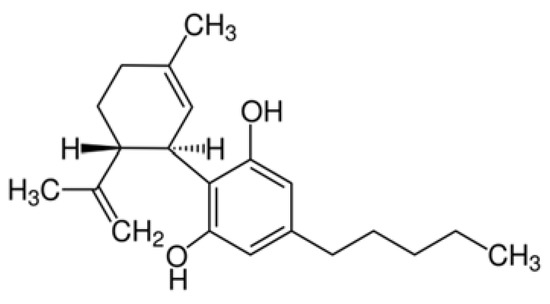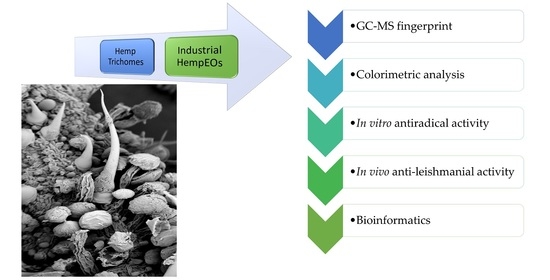 “Colorectal cancer (CRC) is between the top three occurring cancers worldwide. The anticancer effects of Cannabinoid receptor 2 (CB2) agonist (GW833972A) in the presence and absence of its inverse agonist (SR144528) on Human colorectal adenocarcinoma cells (HT-29) was investigated. Following cell viability assays on HT-29 and HFF cells, the molecular mechanism(s) of cytotoxicity and apoptotic pathways of cell death were analyzed. The anticancer effects of CB2 agonist were measured with tumor cell migration and colony-forming assays. Real-time PCR and Western blotting techniques were used to examine any alterations in the expression of apoptotic genes. A concentration and time-dependent cytotoxicity of CB2 agonist with IC50 value of 24.92 ± 6.99 μM was obtained. The rate of lipid peroxidation was elevated, while the TNF-α concentration was declined, significantly (p < 0.05). CB2 agonist (50 μM) reduced the colony-forming capability by 83% and tumor cell migration by 50%. Apoptotic effects of CB2 agonist were revealed with the increase of apoptotic cells in Acridine orange/Ethidium bromide staining, clear DNA fragmentation, pro-apoptotic genes and proteins upregulation (Caspase-3 and p53), and significant downregulation of anti-apoptotic Bcl-2. All assessments demonstrated that CB2 agonist-induced effects were reversed by CB2 inverse agonist. These data suggest that CB2 agonists at micro-molar concentrations might be considered in the CRC treatment, and their effectiveness attributes to the apoptosis induction via upregulation of caspase-3 and p53 and downregulation of Bcl-2.”
“Colorectal cancer (CRC) is between the top three occurring cancers worldwide. The anticancer effects of Cannabinoid receptor 2 (CB2) agonist (GW833972A) in the presence and absence of its inverse agonist (SR144528) on Human colorectal adenocarcinoma cells (HT-29) was investigated. Following cell viability assays on HT-29 and HFF cells, the molecular mechanism(s) of cytotoxicity and apoptotic pathways of cell death were analyzed. The anticancer effects of CB2 agonist were measured with tumor cell migration and colony-forming assays. Real-time PCR and Western blotting techniques were used to examine any alterations in the expression of apoptotic genes. A concentration and time-dependent cytotoxicity of CB2 agonist with IC50 value of 24.92 ± 6.99 μM was obtained. The rate of lipid peroxidation was elevated, while the TNF-α concentration was declined, significantly (p < 0.05). CB2 agonist (50 μM) reduced the colony-forming capability by 83% and tumor cell migration by 50%. Apoptotic effects of CB2 agonist were revealed with the increase of apoptotic cells in Acridine orange/Ethidium bromide staining, clear DNA fragmentation, pro-apoptotic genes and proteins upregulation (Caspase-3 and p53), and significant downregulation of anti-apoptotic Bcl-2. All assessments demonstrated that CB2 agonist-induced effects were reversed by CB2 inverse agonist. These data suggest that CB2 agonists at micro-molar concentrations might be considered in the CRC treatment, and their effectiveness attributes to the apoptosis induction via upregulation of caspase-3 and p53 and downregulation of Bcl-2.”
https://pubmed.ncbi.nlm.nih.gov/33886060/
https://link.springer.com/article/10.1007/s11010-021-04158-6


 “Glioblastoma multiforme (GBM) is the most lethal subtype of glioma.
“Glioblastoma multiforme (GBM) is the most lethal subtype of glioma.  “In recent years, evidence has accumulated that cannabinoids-especially the non-psychoactive compound, cannabidiol (CBD)-possess promising medical and pharmacological activities that might qualify them as potential anti-tumor drugs. This review is based on multiple studies summarizing different mechanisms for how CBD can target tumor cells including cannabinoid receptors or other constituents of the endocannabinoid system, and their complex activation of biological systems that results in the inhibition of tumor growth. CBD also participates in anti-inflammatory activities which are related to tumor progression, as demonstrated in preclinical models. Although the numbers of clinical trials and tested tumor entities are limited, there is clear evidence that CBD has anti-tumor efficacy and is well tolerated in human cancer patients. In summary, it appears that CBD has potential as a neoadjuvant and/or adjuvant drug in therapy for cancer.”
“In recent years, evidence has accumulated that cannabinoids-especially the non-psychoactive compound, cannabidiol (CBD)-possess promising medical and pharmacological activities that might qualify them as potential anti-tumor drugs. This review is based on multiple studies summarizing different mechanisms for how CBD can target tumor cells including cannabinoid receptors or other constituents of the endocannabinoid system, and their complex activation of biological systems that results in the inhibition of tumor growth. CBD also participates in anti-inflammatory activities which are related to tumor progression, as demonstrated in preclinical models. Although the numbers of clinical trials and tested tumor entities are limited, there is clear evidence that CBD has anti-tumor efficacy and is well tolerated in human cancer patients. In summary, it appears that CBD has potential as a neoadjuvant and/or adjuvant drug in therapy for cancer.” “As the major nonpsychotropic constituent of
“As the major nonpsychotropic constituent of 
 “
“ “We previously reported that cannabidiol (CBD), a cannabinoid with a low toxicity profile, downregulated the expression of the prometastatic gene inhibitor of DNA binding 1 (
“We previously reported that cannabidiol (CBD), a cannabinoid with a low toxicity profile, downregulated the expression of the prometastatic gene inhibitor of DNA binding 1 (
 “Industrial hemp is characterized by a huge amount of by-products, such as inflorescences, that may represent high-quality sources of biomolecules with pharmaceutical interest.
“Industrial hemp is characterized by a huge amount of by-products, such as inflorescences, that may represent high-quality sources of biomolecules with pharmaceutical interest.